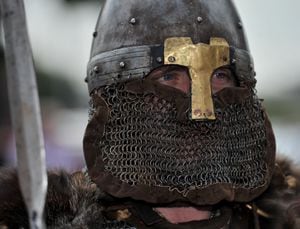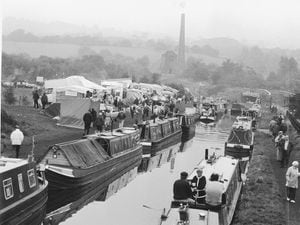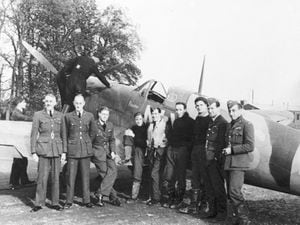Great result which left the Danes down and out
English 1, Danes 0. A great result.

And it's not a prediction for tonight's game. It's a victory already in the bag.
Admittedly, we are going back over 1,000 years. So that's over 1,000 years of hurt for the poor Danes.
There is some uncertainty about the exact venue, but we do know that England had home advantage against the Viking invaders and their cronies.
The date of the triumph is one to resonate down through history – August 5, 910 AD.
That was when the Battle of Wodensfield (aka Battle of Wednesfield, aka Battle of Tettenhall) took place.
Now, if you want to get pedantic about these things, and there will no doubt be learned historians already putting pen to paper, strictly speaking it was not a win for England, because at the time there wasn't an England as such.
That victory was to prove a key event in the eventual unification of England from the various kingdoms of the Anglo Saxons, and marked the beginning of the end of the Scandinavian occupation.
There can also be a scrap over where it actually happened. Tettenhall can point to place names such as Danescourt, Saxonfields, and Danesmoore to support its cause.
There again the folk of Wednesfield have held celebratory events on the anniversary of the battle on the "field of Woden."
And there is a school of thought that there were actually two battles, one at Tettenhall and one at Wednesfield.
Leaving those contentious issues aside, let's have a look at the team line-ups for the big encounter.
The opposition was the Vikings and, contrary to the mythology, their matchday kit did not include helmets with horns sticking out of the side.
They came from Scandinavia, the area which became the countries of Denmark, Norway, and Sweden, and were always up for a fight, and if there wasn't one going, they would look for one with their plundering and pillaging raids.
Their victims didn't call them Vikings, a name which came later. Instead they called them Dani – Danes.
They were so powerful that whole areas in the Midlands and the north and east fell under their control, a swathe under Viking rule known as the Danelaw. It's only thanks to Alfred the Great that they didn't take us over entirely.
Our champions are the plucky Mercians and West Saxons, under team manager King Edward the Elder (King Alfred's son), who in 909 were sufficiently confident to launch a provocative raid on the Viking kingdom of Lindsey, which is today part of Lincolnshire. During this excursion, they plundered the relics of St Oswald, the King of Northumbria who is thought to have been killed at Oswestry.
This made the Vikings very angry. They were bent on revenge.
So they piled an army into their longboats and came up the River Severn to teach the pesky English (pedants, see above) a lesson that they wouldn't forget in a hurry.
They disembarked just south of Bridgnorth but hadn't reckoned on a welcoming party of West Saxons and Mercians.
The two armies fought a small battle near the Shropshire town, before the Anglo Saxon team pursued the Vikings up to Wednesfield/Tettenhall/wherever where there was a major battle.
The Danes suffered a heavy defeat and afterwards couldn't even escape to their boats with their loot, as they were cut off from the river by the forces of Mercia and Wessex.
According to the Anglo Saxon Chronicle they suffered thousands of dead, although as casualty estimates even in modern battles can vary hugely, nobody can ever know for sure.
While it was a far-reaching reverse, it was not an immediate end to Viking rule which was only finally overcome over 40 years later.
Some contend that the victory was as important as the Battle of Hastings, or Bosworth, and if the result had gone the other way we would all be drinking Danish beer now. Like Carlsberg. Come to think of it...
The geographical extent of Viking control all those centuries ago can still be traced today in the place names of their settlements in the north and east of England which had Danish suffixes such as "toft" (e.g. Lowestoft), "thorpe" (e.g. Scunthorpe) and "by" (e.g. Whitby).
And about those horned Viking helmets. The stereotype seems to have been cemented by the costume designer for an 1870s opera. No Viking helmet with horns has ever been found.
So attention turns to tonight. Come on lads – don't let those Wednesfield warriors down. Remember 910!





